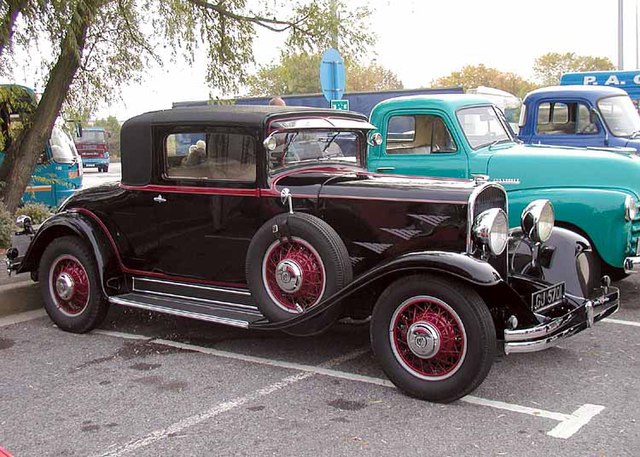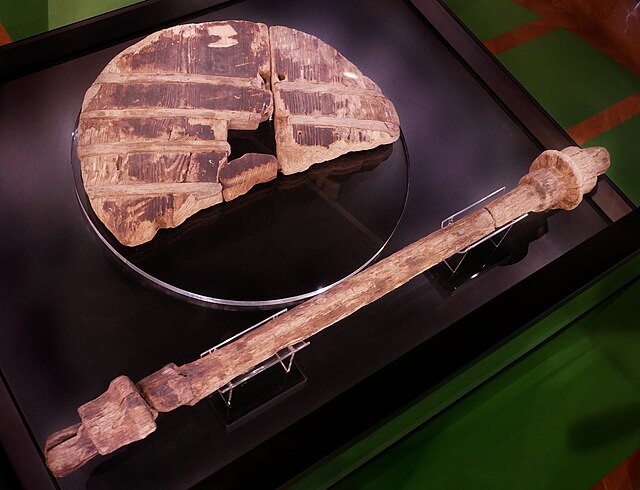Wire wheels, wire-spoked wheels, tension-spoked wheels, or "suspension" wheels are wheels whose rims connect to their hubs by wire spokes. Although these wires are considerably stiffer than a similar diameter wire rope, they function mechanically the same as tensioned flexible wires, keeping the rim true while supporting applied loads. The term suspension wheel should not be confused with vehicle suspension.
Wire wheels on a Victorian era penny-farthing bicycle
Wire wheels on a Blériot XI, which made its debut in 1909
Cadillac
Chrysler
A wheel is a rotating component that is intended to turn on an axle bearing. The wheel is one of the key components of the wheel and axle which is one of the six simple machines. Wheels, in conjunction with axles, allow heavy objects to be moved easily facilitating movement or transportation while supporting a load, or performing labor in machines. Wheels are also used for other purposes, such as a ship's wheel, steering wheel, potter's wheel, and flywheel.
This Ljubljana Marshes Wheel with axle is the oldest wooden wheel yet discovered dating to Copper Age (c. 3130 BCE)
A depiction of an onager-drawn cart on the Sumerian "War" panel of the Standard of Ur (c. 2500 BCE)
Solid wheels on a heavy temple car, contrasted with the lighter wire-spoked wheels of the black roadster bicycle in the foreground
A figurine featuring the New World's independently invented wheel. Among the places where wheeled toys were found, Mesoamerica is the only one where the wheel was never put to practical use before the 16th century.








